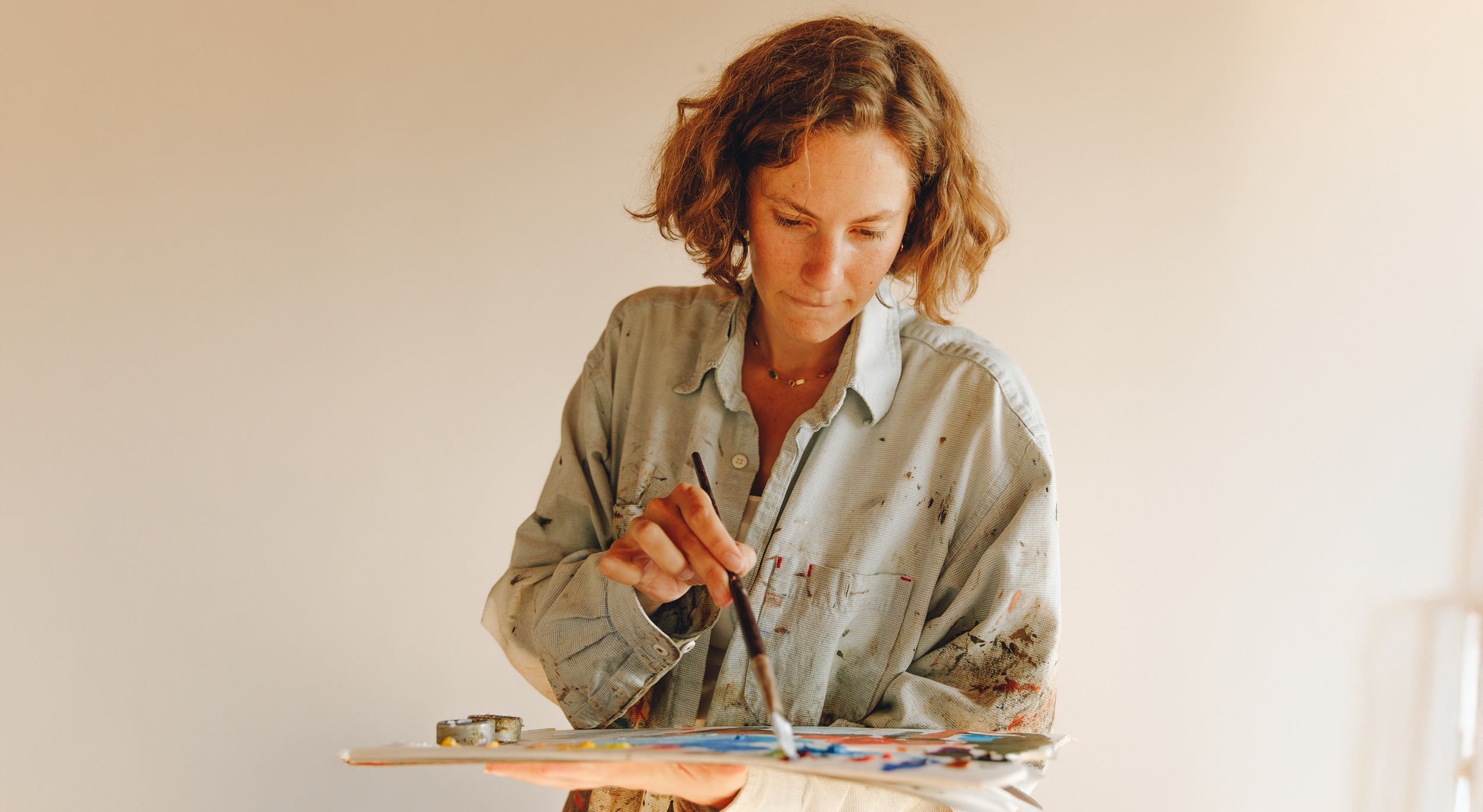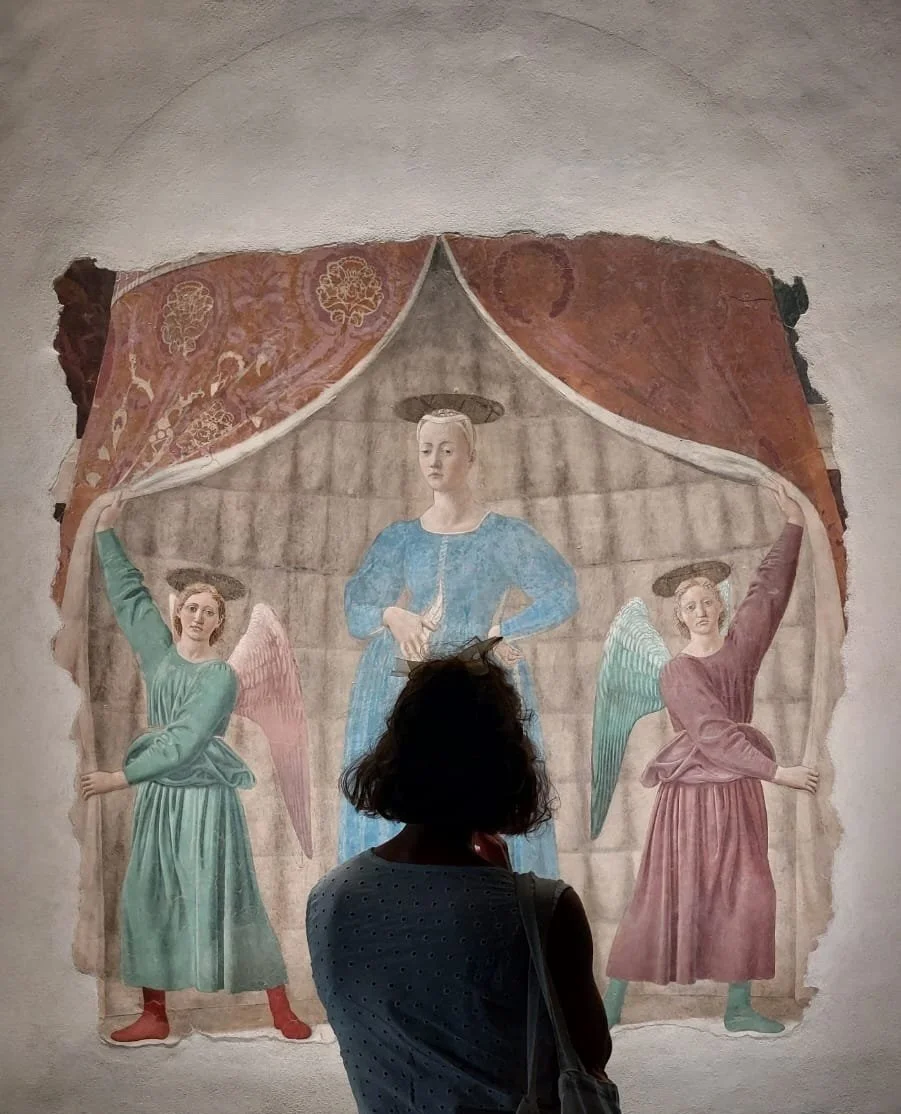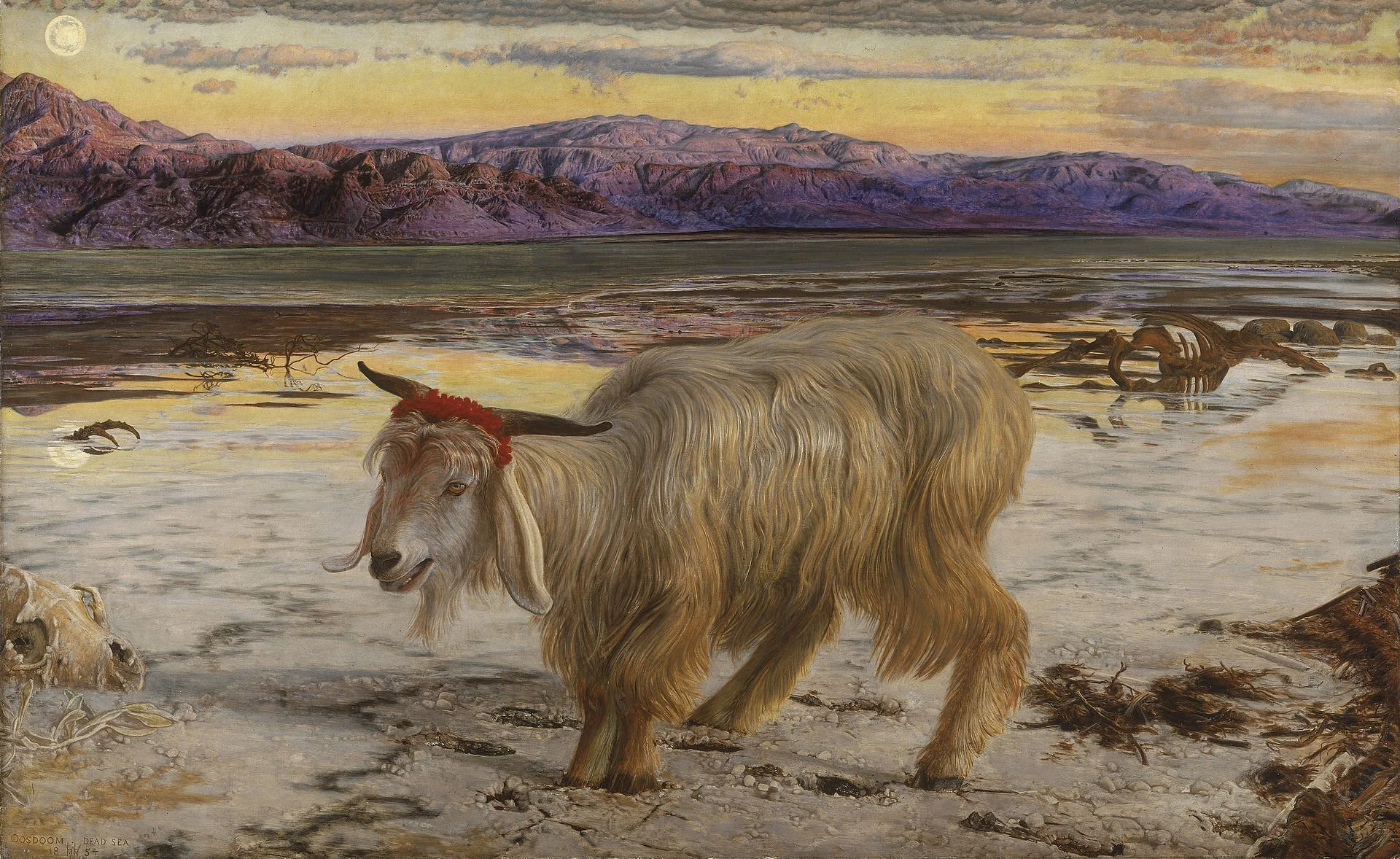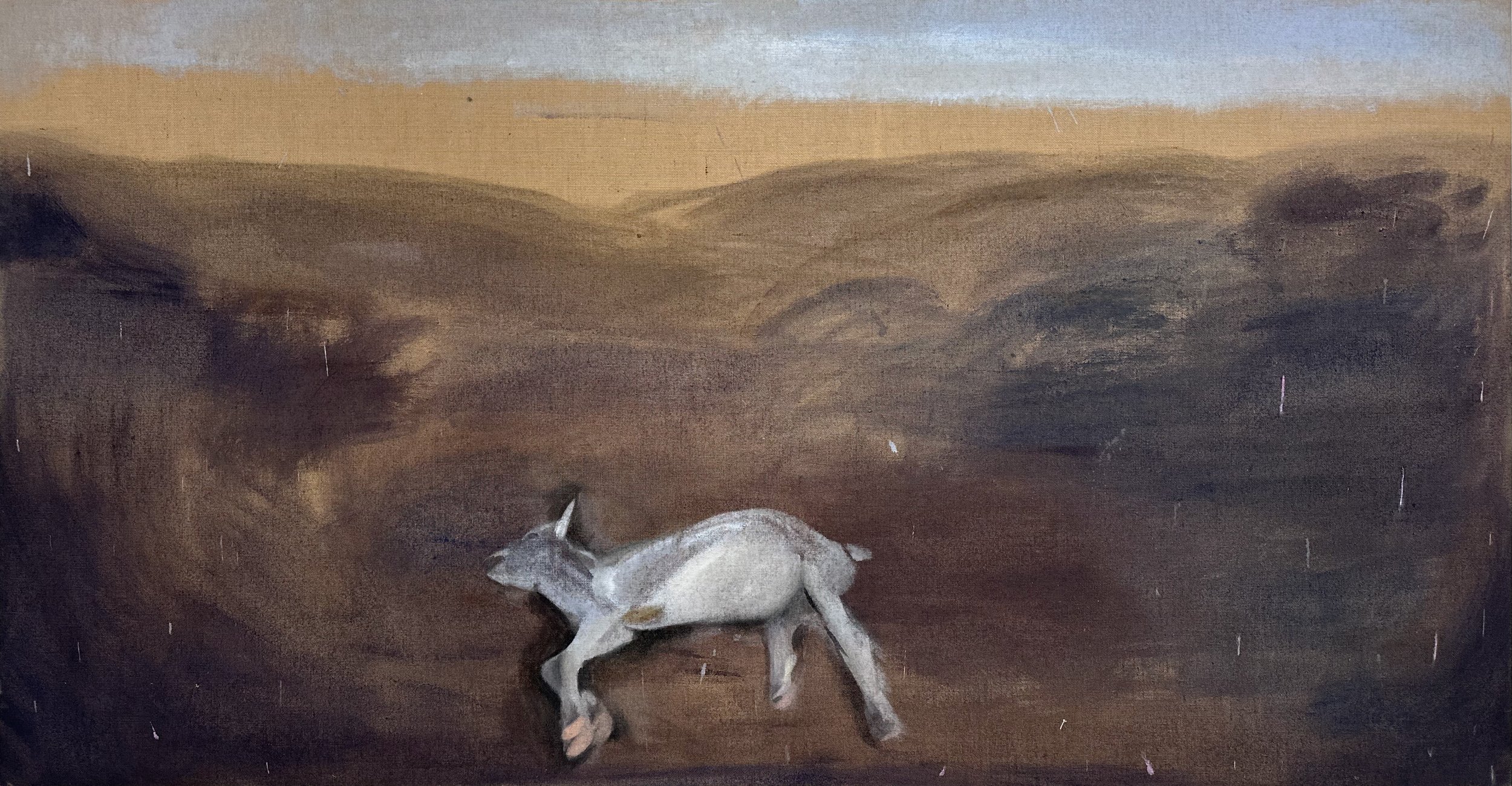
BIOGRAPHY
THE PAINTINGS OF EMMA KATHLEEN HEPBURN FERRER (b. 1994) act like portals. They take the viewer from this contemporary world, saturated with its myriad distractions, and land them in the heart of the spiritual mysteries that were the lifeblood of a pre-modern era. Her images of the biblical scapegoat, the Lamb of God (Agnus Dei), slaughtered unicorns, hunts and rituals are iconic in the true sense of the word; like medieval icons, they are at once humble and luxuriant, sparing and replete. And yet, paradoxically, they appear entirely of their moment – both in the handling of the paint or the composition, and as tributaries to the growing surge of interest in figurative painting that investigates the nature of spirituality and the spirituality of nature. They are the product of a rare intensity of focus.
Ferrer’s focus was sharpened in Florence, where the painter moved from Los Angeles in her early teenage years. There she imbibed the humanist philosophies that underpinned the Florentine Renaissance, and became intimate with the works of the innumerable great masters who flourished in the time of the Medici.
At the age of 18, Ferrer made a momentous decision that has shaped the course of her career. Rather than taking up a place at the prestigious Central Saint Martins art school in London, she became one of the youngest students ever accepted onto the Advanced Painting program at the Florence Academy of Art. This was a rigorously traditional education, devoted to neoclassical principles and taking Velázquez, Rembrandt – and, of course, the Italian School – as its exemplars in how to translate the perceived world into paint. Through comprehensive study of anatomy, of drawing and painting from life, and of classical materials, Ferrer was seeking control over her painting and achieved it – although she always knew that her calling lay beyond the strict confines of the naturalist tradition.
Agnus Dei, 2024
After her graduation, 4 years working in the contemporary art world in New York, the completion of her undergraduate studies in History & Visual Arts at Harvard University and SUNY, a move to the Tuscan countryside near the town of Lucca, and an MFA at Central Saint Martins all conspired to give Ferrer a clearer sense of how she might define her singular contribution to contemporary painting.
Like the Pre-Raphaelite painters in the 19th century, Ferrer has come to look beyond the polished elegance of the High Renaissance to the rawness of the Italian quattrocento – the moment when the Middle Ages were giving way to the Renaissance, which Ferrer has described as ‘the pinnacle of painting’. However, drawing on the influence of more recent painters including Goya, Manet, Giorgio de Chirico, Edvard Munch, Arnold Böcklin, and Félix Vallotton, Ferrer has also honed a deeply modern understanding of the power of the fragmentary image.
The Scapegoat, 1854–56. William Holman Hunt
Take her series of Scapegoat paintings – the subject of Ferrer’s inaugural solo show at Sapar Contemporary in New York (2025). This was inspired by The Scapegoat (1854–56), a painting by the founding member of the Pre-Raphaelite Brotherhood William Holman Hunt – itself a response to the passage in the Book of Leviticus which describes how a kid goat may be cast into the wilderness, carrying with it the sins of the community, while its sibling is sacrificially slaughtered. In Ferrer’s reckoning, the mountains of the biblical Edom so meticulously rendered by Holman Hunt are either absent entirely, or abstracted into brushstrokes as loose as they are faint, unmistakeably modern in their provisional quality.
The Scapegoat, 2023. Emma Ferrer
These scapegoats – always contorted or prone, in a position that suggests anguish – are shorn of any extraneous detail. The effect is that they become lodged in the viewer’s mind immediately and unmoveably, like a symbol or a logo. Ferrer grants us access – as though through an initiatory rite – to a profound revelation of the innate savagery of humanity’s relation to nature; a scriptural vision, its roots deep in the pagan past, that has been reinterpreted for the 21st century.
In his seminal study, Pagan Mysteries in the Renaissance (1958), the art historian Edgar Wind describes how the art and philosophy of the early Florentine Renaissance were seeking ‘the secret gate through which the universal invades the particular’. Through her paintings of The Scapegoat and other major series – Rites & Rituals, Green Pastures, and most recently The Unicorn – Ferrer is proving herself among the present crop of young contemporary painters by reviving the eternal relevance of this quest. She continues to live and work in the chosen solitude of her home at the foot of the Apuan Alps, overlooking the Mediterranean Sea.
A Day in the Life, 2025




